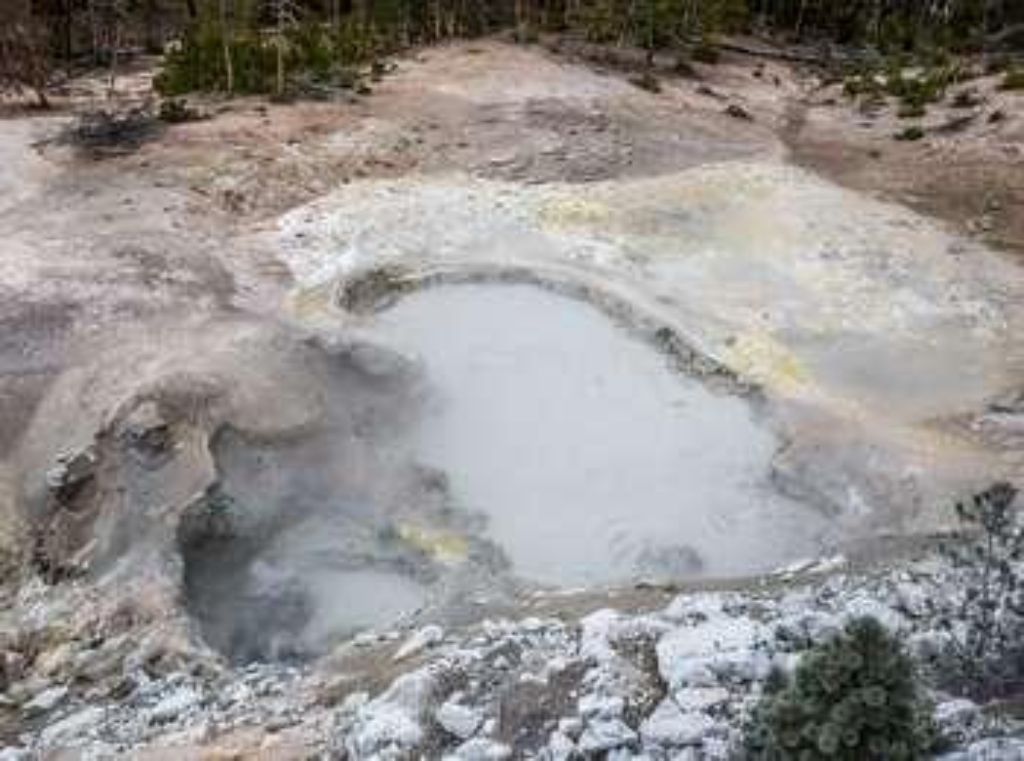
Sulphur Caldron is one of the most acidic hot springs in Yellowstone. Sulphur Caldron's turbulent waters have a pH of approximately 1-2, which is similar to car battery acid or stomach fluids.
Its name comes from the large amounts of free sulfur in its waters.
Hot Springs
Hot springs are the most common hydrothermal features in Yellowstone. Their plumbing has no constrictions.
Superheated water cools as it reaches the surface, sinks, and is replaced by hotter water from below.
This circulation prevents water from reaching the temperature needed to set off an eruption.
The Smell
Mudpots are acidic features with a limited water supply. Some microorganisms use hydrogen sulfide, which rises from deep within the earth, as an energy source. They help convert the gas to sulfuric acid, which breaks down rock to wet clay mud and creates the area's smell. The pungent odor of rotten eggs is caused by the hydrogen sulfide gas.
Various gases escape through the wet clay mud, causing it to bubble. Mudpot consistency and activity vary with the seasons and precipitation.
Mud Volcano Area
The Mud Volcano area has many mudpots and hillsides strewn with trees cooked by steam. The hydrothermal features here are some of the most acidic in the park.
Mud Volcano is near the greatest uplift and sinking of the Yellowstone Caldera floor. Many faults converge here and earthquakes are common.
The areas surrounding the Mud Volcano vent and the other major vent near Old Faithful are called resurgent domes. Resurgent domes are active ground deformation, where the land moves up or down with the fluctuation of the magma chamber below. Scientists monitor these domes closely for information about ongoing volcanic activity.
Use Caution in Thermal Areas
- Stay on boardwalks and trails.
- Thermal water can severely burn you.
- Never run, push, or shove.
- Supervise children at all times.
**You are responsible for your safety.**
**Think Safety, Act Safely. Yellowstone is a Dangerous Place.**
Is there something we missed for this itinerary?
Itineraries across USA


















































